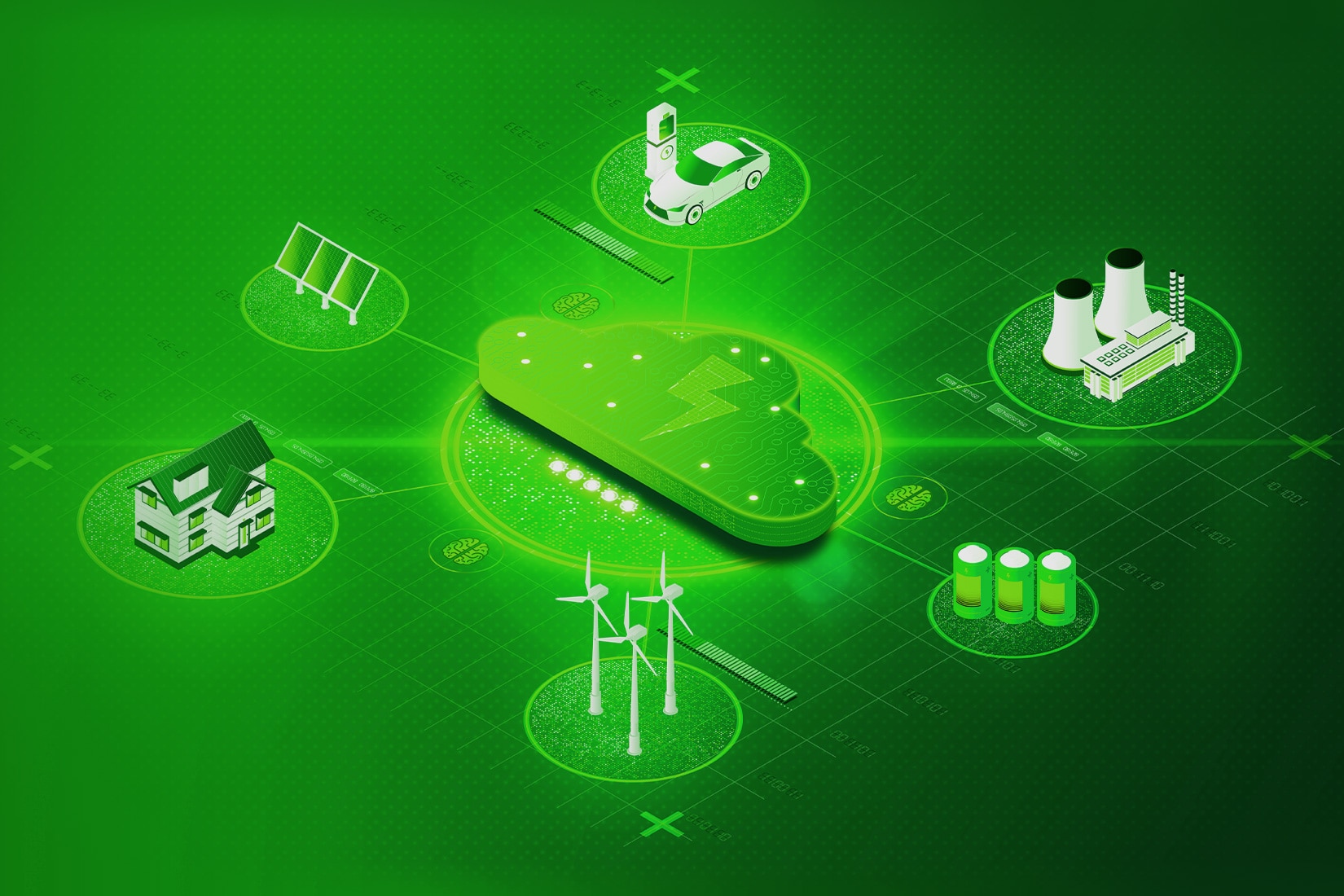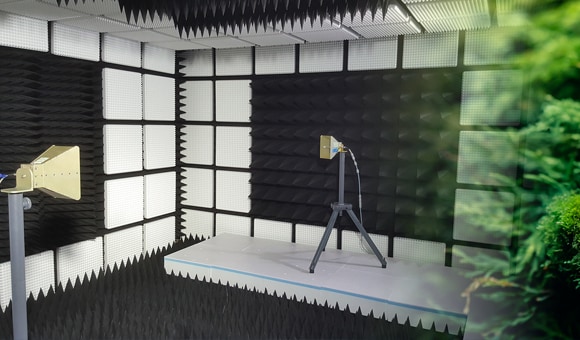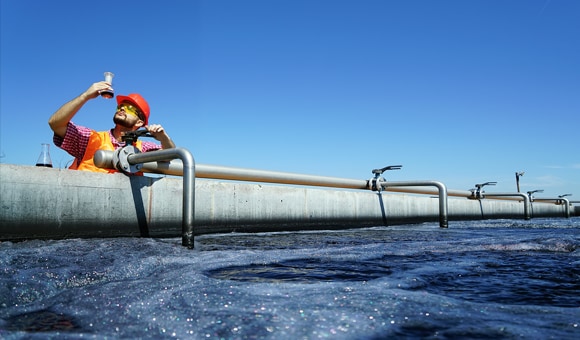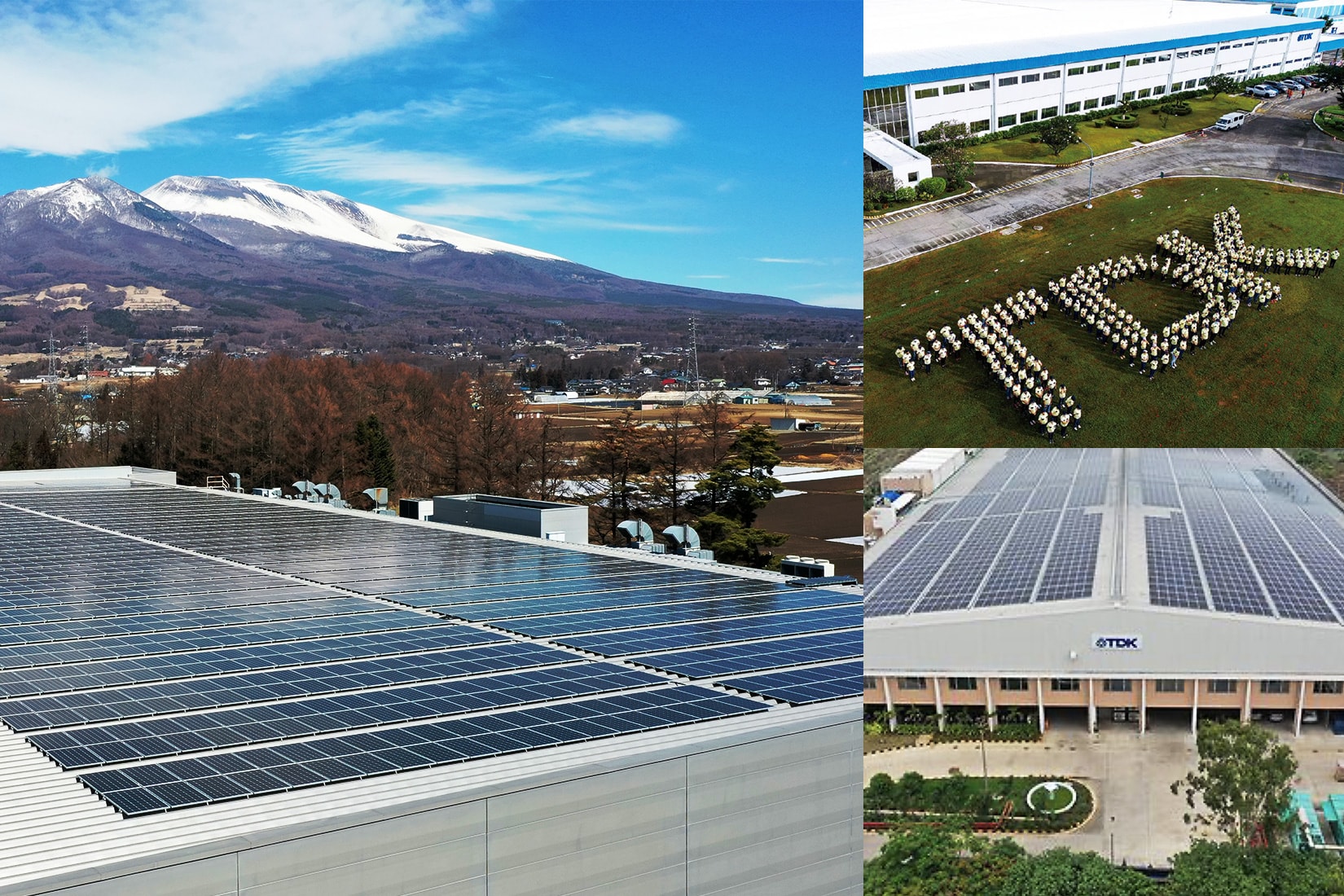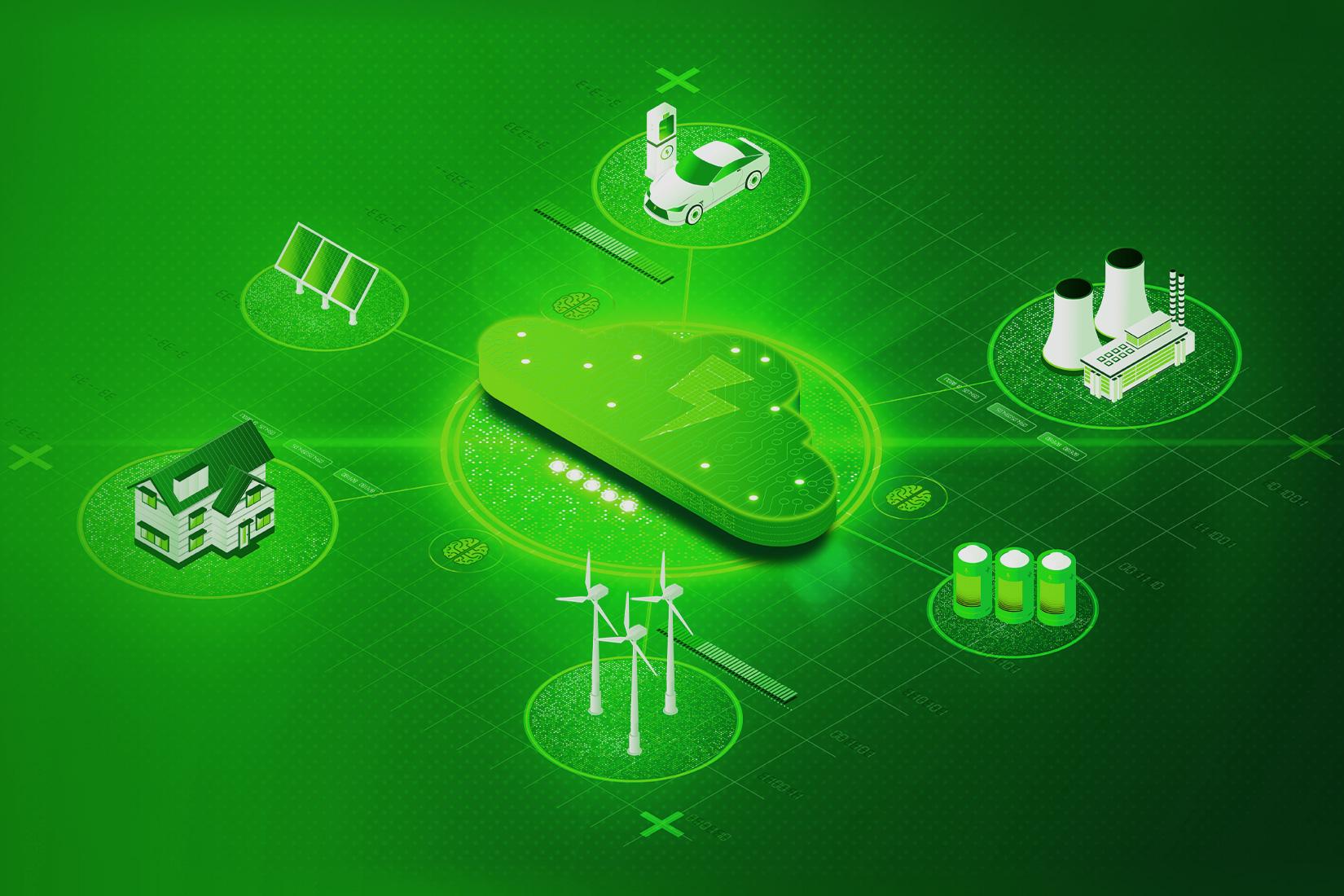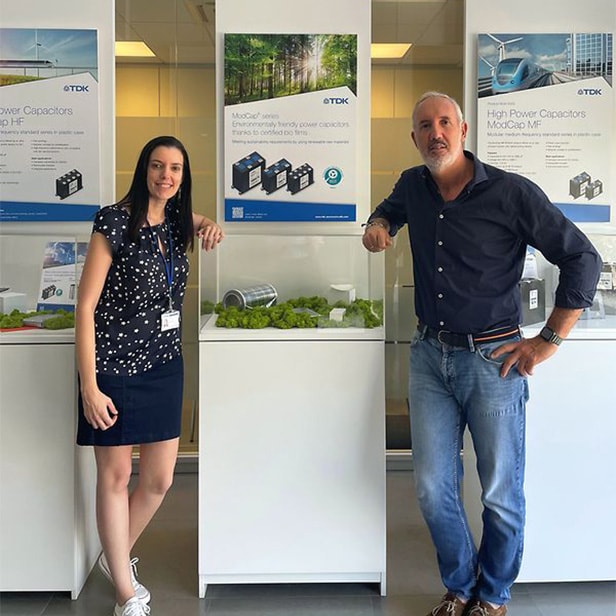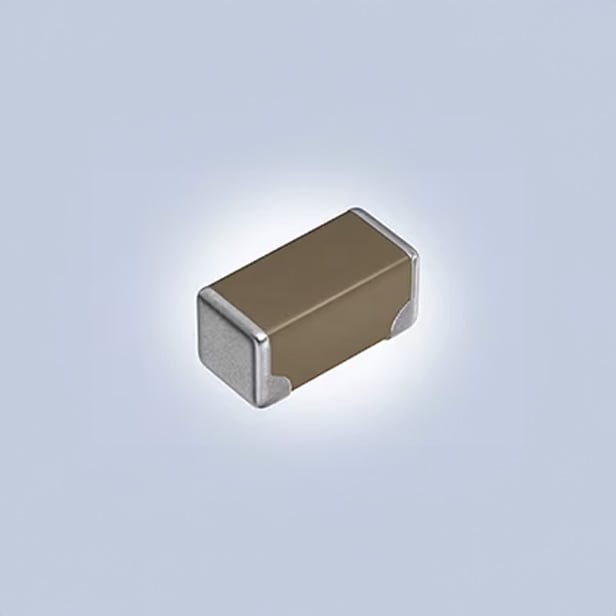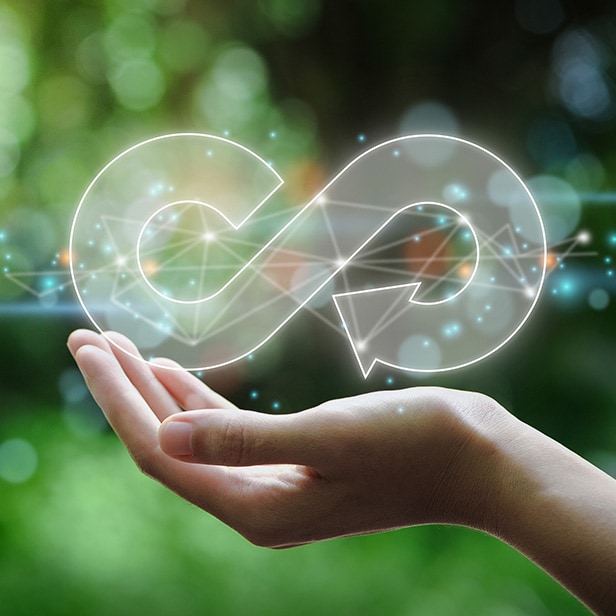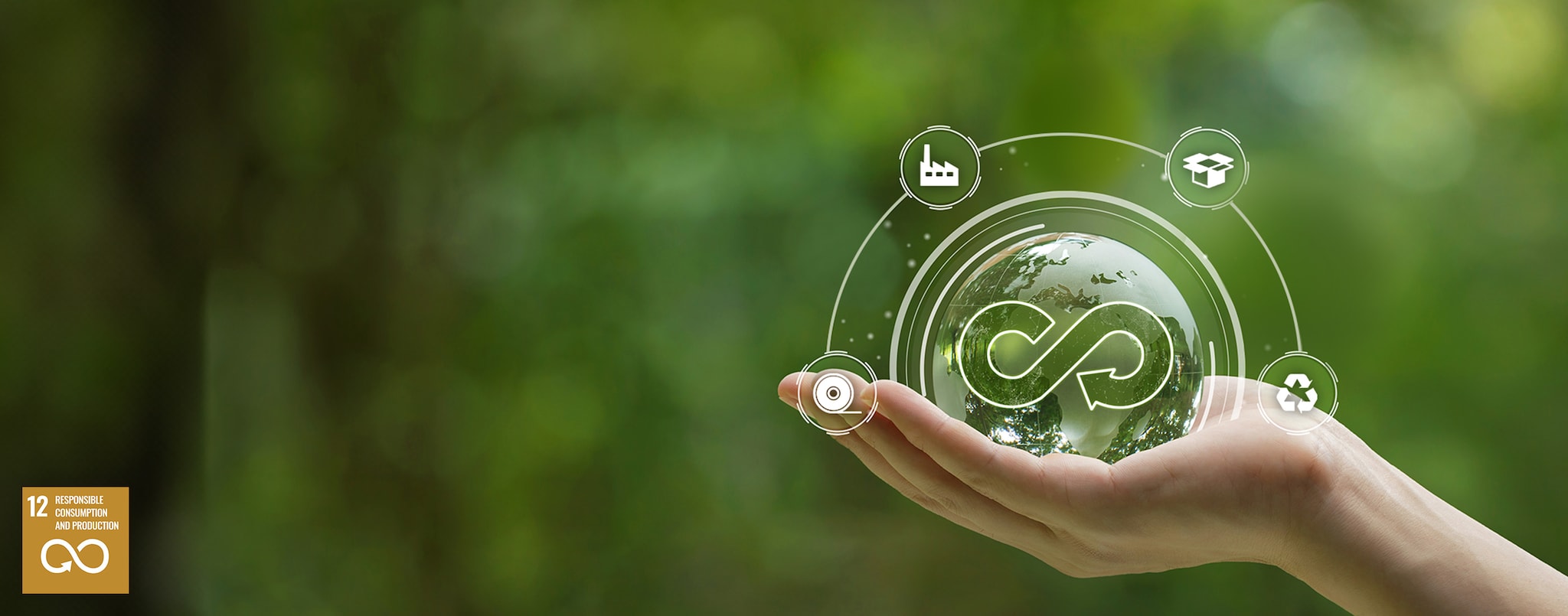
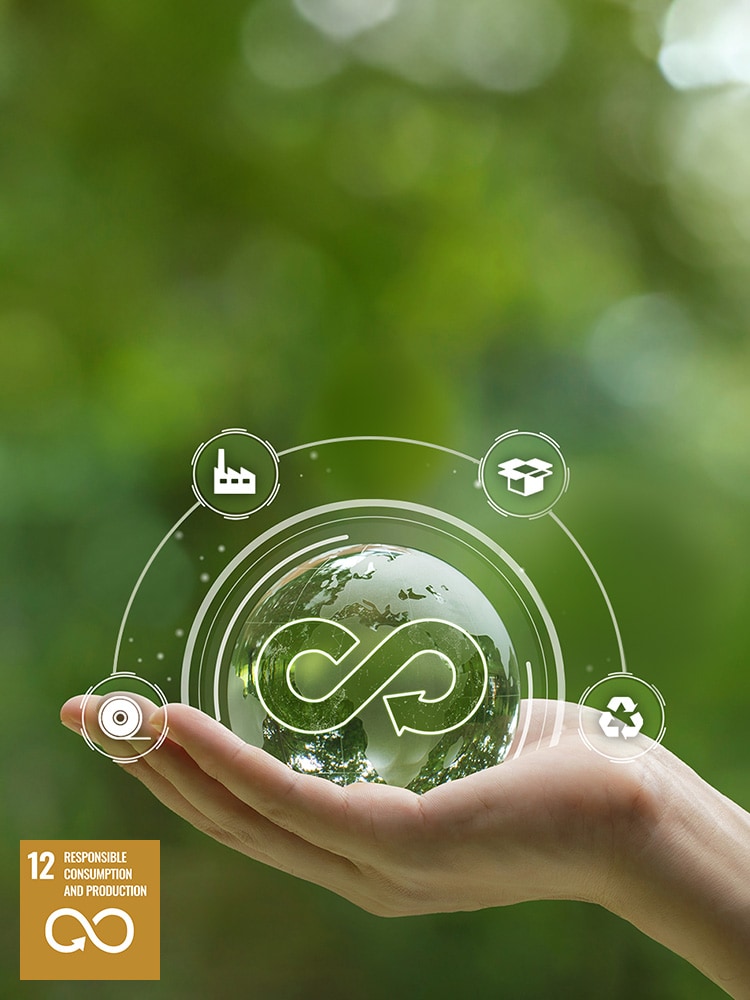
【Sustainability and TDK】
What Are the Environmental Measures for Electronic Parts That Accelerate the Shift to a Circular Economy?
Economic and social activities based on mass production and consumption create a society based on mass waste and impede healthy material circulation. They are also closely related to various environmental problems such as climate change, depletion of natural resources, and destruction of biodiversity caused by large-scale resource extraction. The demand for resources, energy, and food, as well as the amount of waste generated, are becoming increasingly serious worldwide. Therefore, the global trend is to move from one-way economic and social activities to a circular economy that uses resources in a sustainable manner. TDK promotes product design and manufacturing processes aimed at a circular economy, in order to minimize the impact on the global environment throughout the product life cycle.
Resources Never Become Waste in a Circular Economy
TDK collects and analyzes the latest information related to the circular economy and promotes activities.
Specific examples include the following two activities:
What is a circular economy?
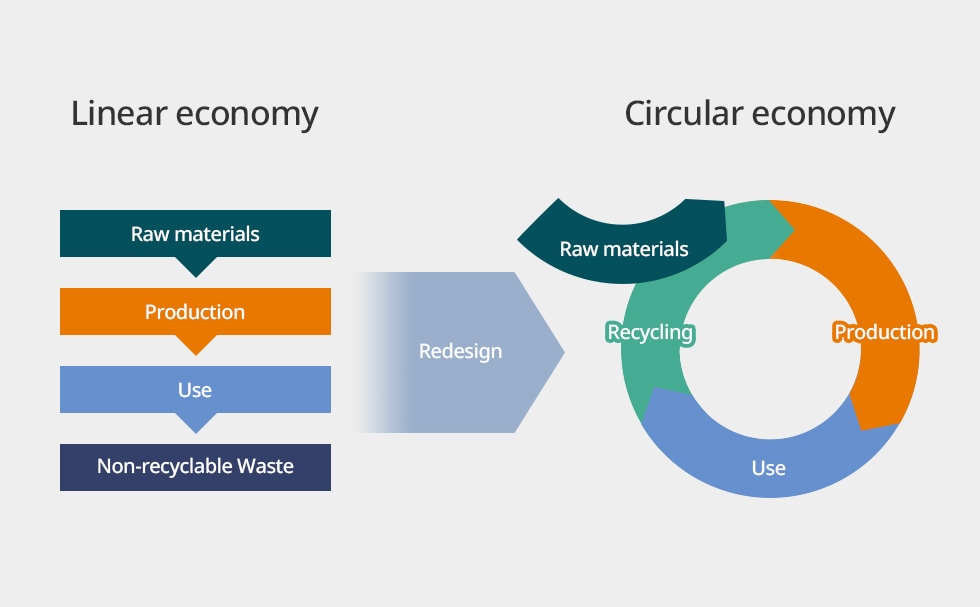
Film Materials for Film Capacitors Were Changed to Biomass-Based
Even existing products can be made more sustainable by using raw materials from sustainable sources. One example is TDK’s film capacitor series ModCap where innovative sustainable films are applied. This means that the use of eco-friendly materials further improves products initially contributing to the environment. All ModCap products use bio-circular materials to pursue high environmental performance.
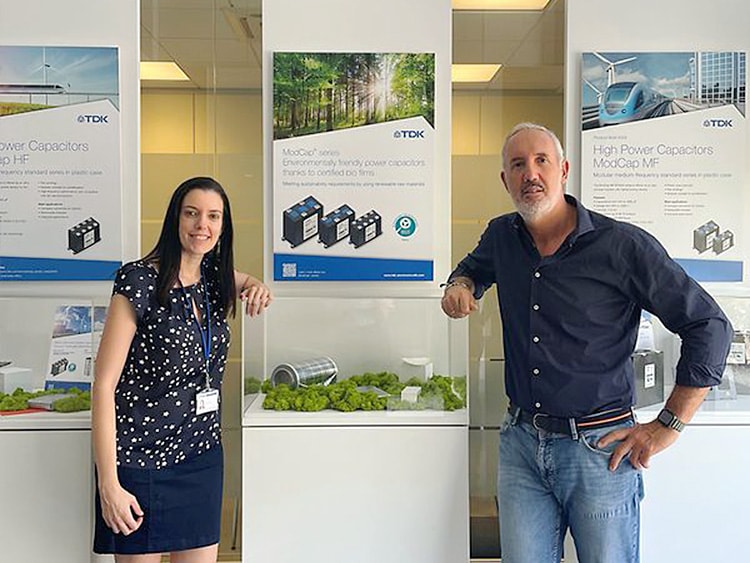
Dr. Marisa Rico (left side of the photo), coordinator of the materials science laboratory at TDK Electronics, a TDK affiliate, was responsible for the development of materials for the ModCap series. “We are constantly investigating different approaches related to the circular economy to extend the life cycle of our components, reduce material required, and better manage end-of-life waste,” said Marisa about the new series. “Therefore, we are actively collaborating with suppliers to develop new sustainable materials without compromising on the final material properties. During our activities, a revolutionary proposal of applying biobased films, which are already a well-known solution for packaging, especially for the food sector, to our capacitors.” Victor Alcaide Lozano (right side of the photo), Director of Product Marketing for PEC HP Capacitors, was mainly responsible for the commercialization of this capacitor series. “This biobased film has the very same electrical and physical properties and performance as conventional products. The technology can be applied to other film capacitors in addition to ModCap.”
▶Related article:
Capacitors that Underpin the Future of Railroads and Usher in the Age of the Environment
ModCap series
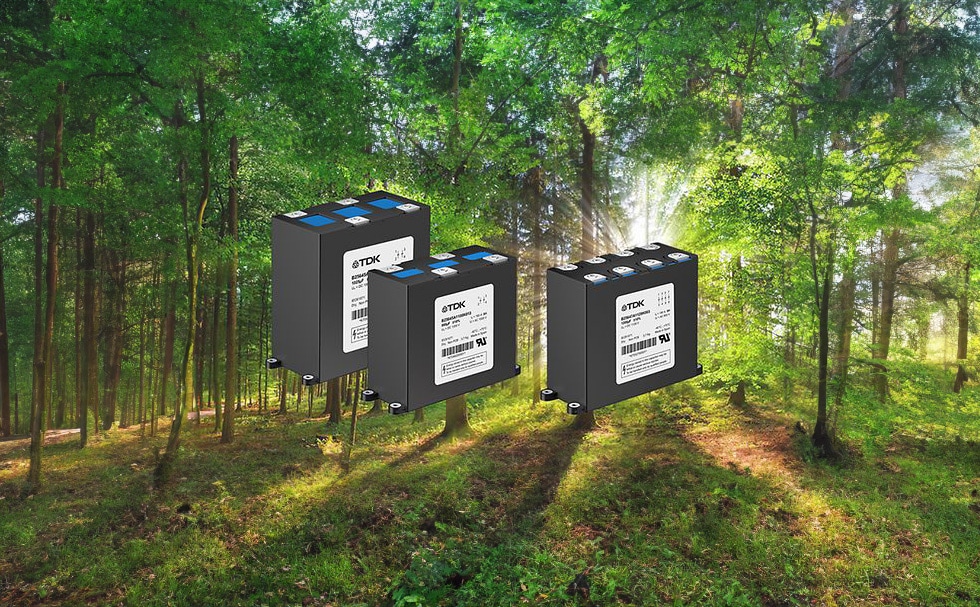
Biobased polypropylene film and ISCC certification
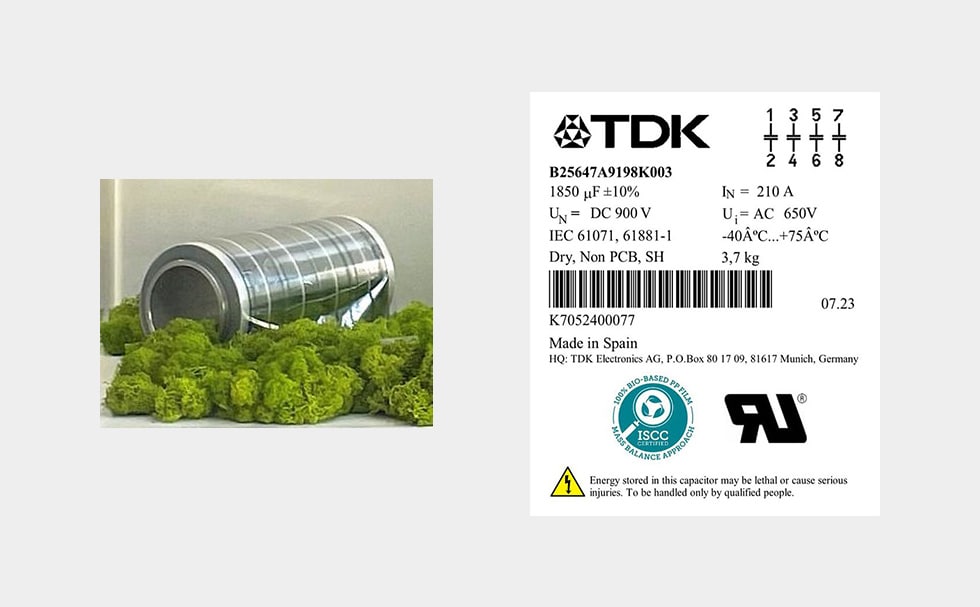
Recycling of PET Films Used in MLCC Manufacturing
TDK is the first manufacturer in the electronic component industry*1 that has successfully built a recycling system that reuses PET films used in the manufacturing process of flagship multilayer ceramic capacitors (MLCCs). MLCCs are indispensable for a range of electronic equipment such as smartphones and laptop computers as well as automobiles where the use of electric/electronic devices plays an essential role in stabilizing voltage and reducing noise through electricity charging and discharging.
The MLCC manufacturing process includes a step of coating internal electrodes with sheeted dielectric paste, which is a raw material. A polyethylene terephthalate (PET) film is used in the coating. After being used in this process, the PET films are mainly thermal-recycled*2 or incinerated.
In comparison, this new TDK system washes the surfaces of waste PET films, and returns them to PET plastic form (as a pellet), after which the PET film manufacturer TORAY Corporation, a project partner based in Chuo-ku Tokyo, forms a film. TDK then purchases those films and applies special processing to them, enabling them to be reused again in the manufacturing process. The recycled PET film used in this system reduces CO₂ emissions by approximately 10%*3 compared to conventional PET film. Recycled films will be applied to other products than MLCCs with the aim for increasing the percentage of MLCC use in other product.
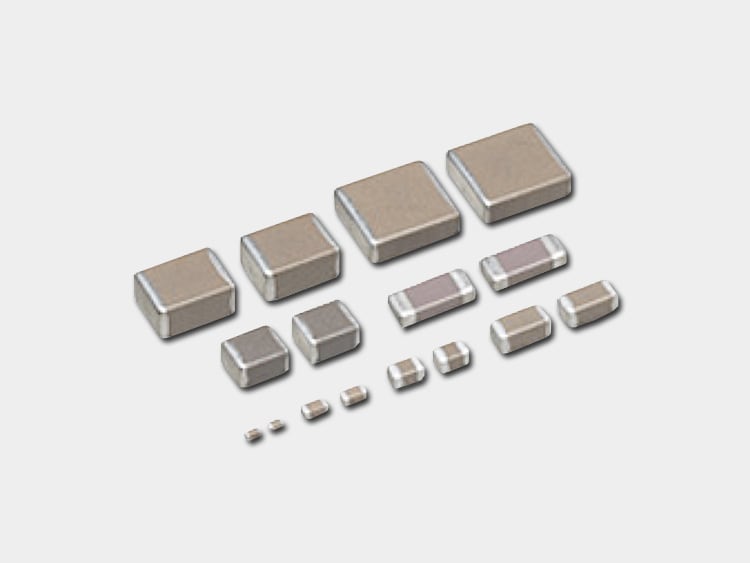
The achievement of recycled PET films is the outcome of TDK’s efforts to contribute to a circular economy, realizing a maximization of resource/product value, minimization of resource consumption, and control of waste generation, in alliance with TORAY Corporation.
Material flow of PET films
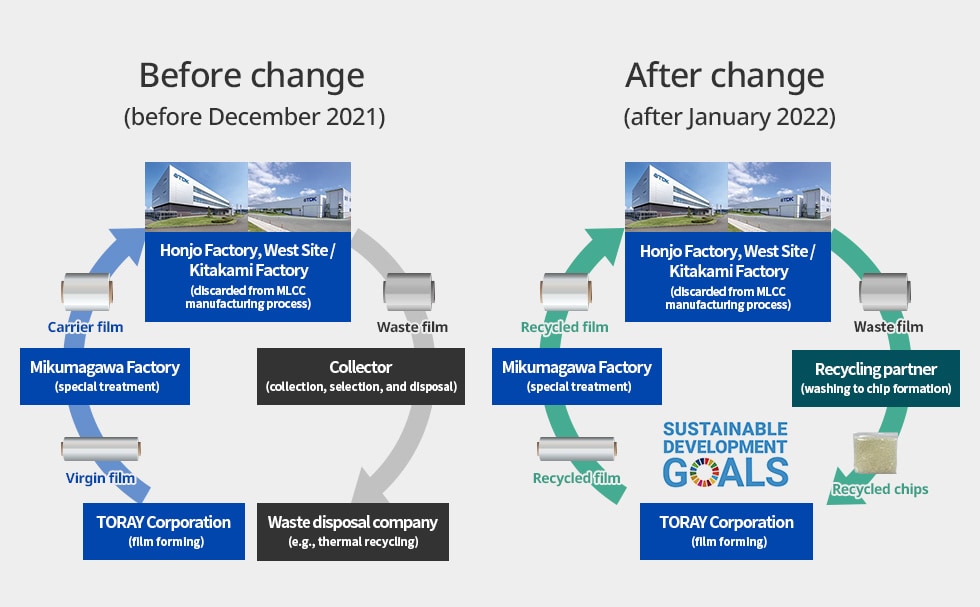
TDK will make efforts to maximize the value of resources and reduce the burden on the environment throughout the manufacturing process, from the use of raw materials through design and manufacturing of products to recycling of waste from production, thereby contributing to the creation of a circular economy.
Terminology
- “first manufacturer in the electronic component industry”: Source: TDK, as of December 2021
- Thermal recycling: Recycling system to collect and use the heat energy generated during waste incineration.
- “reduces CO₂ emissions by approximately 10%”: CO₂ generated in the manufacturing process of PET film. Investigated by TORAY Corporation


